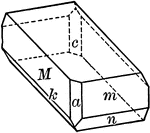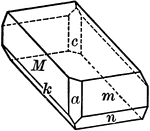
Rectangle
Tangrams, invented by the Chinese, are used to develop geometric thinking and spatial sense. Seven figures…

Rectangle
Tangrams, invented by the Chinese, are used to develop geometric thinking and spatial sense. Seven figures…

Rectangle
Tangrams, invented by the Chinese, are used to develop geometric thinking and spatial sense. Seven figures…

Rectangular Prism
A rectangular prism with labeled sides: AAAA are the four vertical parallel corners. BBBB and CCCC are…
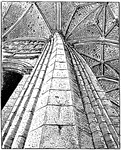
Refinement
"Architectural Refinement from Church of St. Quentin, France ... deviations from the geometrical…
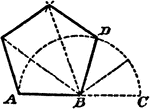
Construction Of A Regular Polygon On A Line
An illustration showing how to construct a regular polygon on a given line without resort to its center.…

Area Of Regular Polygon Proof
An illustration showing that the area of a regular polygon is equal to the area of a triangle whose…

Revolution About Axis Forward or Back
"The pyramid be revolved about an axis perpendicular to V, the front view will be unchanged and may…

Revolution About Axis Perpendicular to H
The object can revolve around an axis (H) to create a projection on the other plane without changing…

Revolution About Axis Perpendicular to V
"The pyramid be revolved about an axis perpendicular to V, the front view will be unchanged and may…

Intersection of Surface of Revolution and Plane
"A series of planes as S—S are passed perpendicular to the axis of revolution, cutting out the…
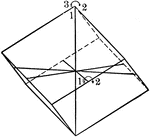
Symmetry of Rhombohedral Class
"The vertical crystallographic axis is one of trigonal symmetry, and the three horizontal crystallographic…
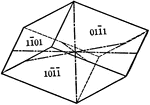
Negative rhombohedron
"The rhombohedron is a form consists of six rhombic-shaped faces, which correspond in their position…
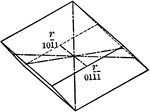
Positive rhombohedron
"The rhombohedron is a form consists of six rhombic-shaped faces, which correspond in their position…

Rhombus
Tangrams, invented by the Chinese, are used to develop geometric thinking and spatial sense. Seven figures…

Rhombus
Tangrams, invented by the Chinese, are used to develop geometric thinking and spatial sense. Seven figures…

Rhombus
Tangrams, invented by the Chinese, are used to develop geometric thinking and spatial sense. Seven figures…

Rhombus
Tangrams, invented by the Chinese, are used to develop geometric thinking and spatial sense. Seven figures…

Right Triangle
Tangrams, invented by the Chinese, are used to develop geometric thinking and spatial sense. Seven figures…

Right Triangle
Tangrams, invented by the Chinese, are used to develop geometric thinking and spatial sense. Seven figures…

Right Triangle
Tangrams, invented by the Chinese, are used to develop geometric thinking and spatial sense. Seven figures…

Right Triangle
Tangrams, invented by the Chinese, are used to develop geometric thinking and spatial sense. Seven figures…

Relationships In A Right Triangle
Illustration used to show "If one acute angle of a right triangle is double the other, the hypotenuse…
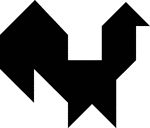
Rooster
Tangrams, invented by the Chinese, are used to develop geometric thinking and spatial sense. Seven figures…

Rooster
Tangrams, invented by the Chinese, are used to develop geometric thinking and spatial sense. Seven figures…
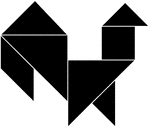
Rooster
Tangrams, invented by the Chinese, are used to develop geometric thinking and spatial sense. Seven figures…

Rooster
Tangrams, invented by the Chinese, are used to develop geometric thinking and spatial sense. Seven figures…

Rose
"In geometry, certain transcendental curves having, in polar coordinates, equations of the form ρ…
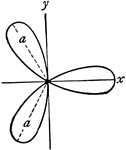
Rose
"In geometry, certain transcendental curves having, in polar coordinates, equations of the form ρ…
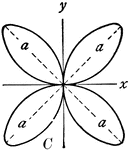
Rose
"In geometry, certain transcendental curves having, in polar coordinates, equations of the form ρ…
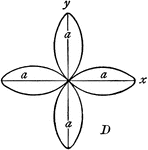
Rose
"In geometry, certain transcendental curves having, in polar coordinates, equations of the form ρ…
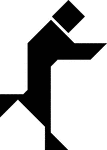
Runner
Tangrams, invented by the Chinese, are used to develop geometric thinking and spatial sense. Seven figures…

Runner
Tangrams, invented by the Chinese, are used to develop geometric thinking and spatial sense. Seven figures…

Runner
Tangrams, invented by the Chinese, are used to develop geometric thinking and spatial sense. Seven figures…
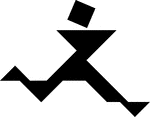
Runner
Tangrams, invented by the Chinese, are used to develop geometric thinking and spatial sense. Seven figures…
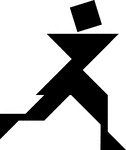
Runner
Tangrams, invented by the Chinese, are used to develop geometric thinking and spatial sense. Seven figures…

Runner
Tangrams, invented by the Chinese, are used to develop geometric thinking and spatial sense. Seven figures…

Runner
Tangrams, invented by the Chinese, are used to develop geometric thinking and spatial sense. Seven figures…
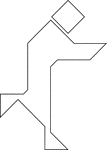
Runner
Tangrams, invented by the Chinese, are used to develop geometric thinking and spatial sense. Seven figures…
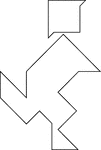
Runner
Tangrams, invented by the Chinese, are used to develop geometric thinking and spatial sense. Seven figures…

Runner
Tangrams, invented by the Chinese, are used to develop geometric thinking and spatial sense. Seven figures…
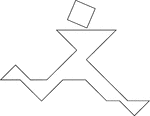
Runner
Tangrams, invented by the Chinese, are used to develop geometric thinking and spatial sense. Seven figures…
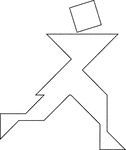
Runner
Tangrams, invented by the Chinese, are used to develop geometric thinking and spatial sense. Seven figures…
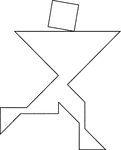
Runner
Tangrams, invented by the Chinese, are used to develop geometric thinking and spatial sense. Seven figures…

Runner
Tangrams, invented by the Chinese, are used to develop geometric thinking and spatial sense. Seven figures…

Runner
Tangrams, invented by the Chinese, are used to develop geometric thinking and spatial sense. Seven figures…
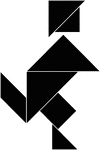
Runner
Tangrams, invented by the Chinese, are used to develop geometric thinking and spatial sense. Seven figures…

Runner
Tangrams, invented by the Chinese, are used to develop geometric thinking and spatial sense. Seven figures…
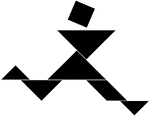
Runner
Tangrams, invented by the Chinese, are used to develop geometric thinking and spatial sense. Seven figures…

Runner
Tangrams, invented by the Chinese, are used to develop geometric thinking and spatial sense. Seven figures…
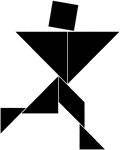
Runner
Tangrams, invented by the Chinese, are used to develop geometric thinking and spatial sense. Seven figures…
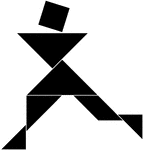
Runner
Tangrams, invented by the Chinese, are used to develop geometric thinking and spatial sense. Seven figures…
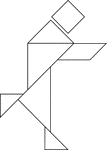
Runner
Tangrams, invented by the Chinese, are used to develop geometric thinking and spatial sense. Seven figures…
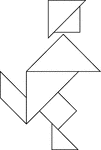
Runner
Tangrams, invented by the Chinese, are used to develop geometric thinking and spatial sense. Seven figures…

Runner
Tangrams, invented by the Chinese, are used to develop geometric thinking and spatial sense. Seven figures…

Runner
Tangrams, invented by the Chinese, are used to develop geometric thinking and spatial sense. Seven figures…
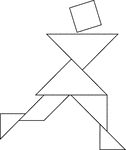
Runner
Tangrams, invented by the Chinese, are used to develop geometric thinking and spatial sense. Seven figures…
